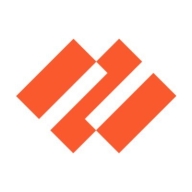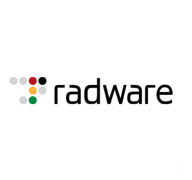


Prisma Cloud by Palo Alto Networks and Radware Cloud WAF Service are both prominent solutions competing in the cloud security space. Prisma Cloud holds an upper hand in cloud integration capabilities, making it a versatile choice for diverse cloud environments.
Features: Prisma Cloud offers comprehensive cloud security with features like workload identity, compliance checks, and runtime protection. Its integration with major cloud providers and ability to conduct automated forensics enhance its versatility. Radware Cloud WAF excels in protecting against web application threats with DDoS protection, bot management, and an intuitive user interface. Both solutions provide API protection, though Prisma Cloud's integration with various cloud environments stands out as an advantage.
Room for Improvement: Prisma Cloud can improve user experience by enhancing automated remediation support and UI navigation. Users report the need for more detailed customer support and better API security monitoring. Radware Cloud WAF could improve in integration and visibility, with challenges noted in API visibility and data flow. Enhanced AI capabilities and more customizable dashboards would increase user satisfaction.
Ease of Deployment and Customer Service: Prisma Cloud benefits from structured customer support but faces criticism for slow response times and lack of proactive assistance. Radware Cloud WAF is praised for its user-friendly deployment and prompt technical support, though smoother integration with other systems would be beneficial. Both solutions excel in providing robust support but differ in deployment ease and speed.
Pricing and ROI: Prisma Cloud is a high-cost solution often debated for its cost-effectiveness among smaller organizations. Its flexible licensing model is appreciated but could benefit from more transparent pricing. Radware Cloud WAF offers competitive, modular pricing that may vary based on specific needs, aligned well with its feature set. Both emphasize value through security capabilities, though Prisma Cloud's higher price point may concern budget-conscious entities.
WordPress security can be tricky, and that's where Cloudflare can be absolutely helpful for small businesses.
For the small project I was working on, using the basic tier provided a huge improvement at zero cost.
In terms of return on investment with Cloudflare, it costs my time to set them up, but basically once they're set up, it's done.
It eliminates the need for additional hardware, making it a financially and technically sound investment.
Reputation and data security are the two most important things to a financial institution.
We may have prevented a security breach with remediation of the findings.
I wouldn't be able to give a number, but Radware Cloud WAF does save time for our staff due to the automation and excellent detection, which is invaluable.
With our on-prem solution, we spent a lot of time on maintenance tasks, OS updates, and ensuring appliances ran smoothly, but with Cloud WAF, all that is managed by the cloud team, allowing us to focus on alert analysis.
We get major insights from the analytics rules and dashboards, allowing us to pinpoint main issues.
This would help us address issues promptly, especially during unforeseen events like DDoS attacks.
Cloudflare does not offer hands-on technical support to fix customer problems but rather a self-service model.
I would rate the technical support with Cloudflare as excellent every time I've had to call them.
They can respond with technical documentation or pass on the case to the next level because it requires the development of a new feature or changing a feature due to a bug.
Their technical support comes up with good solutions for every difficulty we face.
Their technical support comes up with great solutions.
On a scale from one to ten, I would rate the technical support that Radware provides for Cloud WAF Service a perfect ten.
I would give the Radware technical support a ten out of ten. They are definitely outstanding.
The support provided by Radware's Emergency Response Team is excellent.
It is a SaaS tool, but the fact that they have workloads deployed across the world proves that it is a highly scalable tool.
The tool offers very good performance, even during high-traffic periods.
I rate the solution’s scalability an eight out of ten.
It's very scalable and very easy to use.
The scalability is also a 10 out of 10.
We are growing extremely quickly, and Prisma Cloud provides all the required services without any need for us to do anything to scale.
The scalability of Radware Cloud WAF Service rates as a perfect ten out of ten, as we haven't encountered any scaling issues.
The scalability of the Radware Cloud WAF Service deserves a full ten, as it is definitely scalable.
In terms of scalability, it's also a 10 out of 10 because we are using Radware Cloud WAF Service for more than 60,000 employees in our organization, and it works perfectly fine.
For DDoS protection, I would not recommend Cloudflare.
I rate the solution’s stability an eight out of ten.
The service is very stable with no impacts during high-traffic periods.
I would rate it a ten out of ten for stability.
Prisma Cloud is a stable platform.
The solution is stable and is capable of covering large enterprises.
I have never encountered downtime, maintenance-related issues, or latency.
The stability of Radware Cloud WAF Service is excellent, and I would rate it as a ten.
The stability of Radware Cloud WAF Service is perfect; I would rate it a ten out of ten.
There's a need for improvement in areas like AI-based DDoS attacks and Layer 7 WAF features.
Despite these challenges, overall, Cloudflare remains the preferred solution compared to Azure, AWS CloudFront, and Google Cloud Armor.
Areas like how assessment, discovery, and payload are dealt with and how it all comes into your organization can be considered when trying to make suggestions to Cloudflare for improvements.
From a developer's perspective, especially for organizations like banks developing their applications, ensuring API security before deploying them to the cloud is crucial.
Prisma Cloud is an excellent tool.
Even though documentation was available, it took a while for a new person to understand what integration meant, what will be achieved after the integration, or how the integration needed to be done on the Azure or AWS side.
It would be beneficial if we could perform POST requests and integrate our applications more effectively.
The documentation is not up to par, as while the platform's system is robust, the documentation, particularly for API integration, could be more developer-friendly with real-world use cases.
Improving dashboard capabilities to provide this information clearly for management is crucial.
That's where Cloudflare shines for smaller businesses – it's ten times cheaper than Akamai.
I find it to be cheap.
The pricing for the service is reasonable, neither excessively cheap nor prohibitively expensive.
The cost was not on the higher side.
That's why a lot of our clients are shifting from cloud-native to Prisma Cloud: because of its effectiveness and because it is budget-friendly as well.
The solution is very expensive.
Pricing could be more competitive, especially for smaller customers.
I find Radware Cloud WAF to be a quite expensive product compared to others.
The pricing is not cheap; it is expensive, but it is effective.
The most valuable features of the solution are performance and security.
Techniques like minification and image compression reduce the size of assets, leading to better performance and faster user load times.
The solution has been able to compare it to the market, and I think the product has taken great strides in automating quite a bit of things, and they use a lot of AI.
What I like most about Prisma Cloud is its zero-day signatures, maximum security, minimal downtime, cloud visibility, control, and ease of deployment.
All five modules are taking a preventative approach to the security of the cloud environment, from the network to the cloud, posture management and workload protection.
We use it with multi-cloud environments, and there are five cloud providers supported, including Amazon Web Services, Oracle, GCP, Azure, and Alibaba.
The most important aspect of Radware Cloud WAF is that it is over the cloud, offering a comprehensive solution that includes WAF, API protection, bots, and Layer 7 DDoS.
It has features such as API security that protect against advanced attacks, including business logic attacks.
The automated analytics for looking at events in Radware Cloud WAF Service are working for us; the automatic event correlation is very beneficial to analyze how the alerts and events occur and visualize the patterns of network traffic and other traffic going in and out from the application via Radware Cloud WAF Service.



| Company Size | Count |
|---|---|
| Small Business | 46 |
| Midsize Enterprise | 8 |
| Large Enterprise | 25 |
| Company Size | Count |
|---|---|
| Small Business | 37 |
| Midsize Enterprise | 20 |
| Large Enterprise | 55 |
| Company Size | Count |
|---|---|
| Small Business | 9 |
| Midsize Enterprise | 10 |
| Large Enterprise | 37 |
Cloudflare is a highly-regarded Content Delivery Network (CDN) and a Distributed Denial-of-Service (DDoS) protection solution. The robust global connectivity cloud platform that is Cloudflare ensures users are able to connect to the Internet quickly, securely, and reliably. Cloudflare is one of the world's largest networks in the marketplace today. Using Cloudflare, businesses, educational entities, NGOs, vloggers, bloggers, and anyone else with an internet presence can experience more secure, faster websites and applications.
Currently, there are millions of Internet locations on Cloudflare, and the Cloudflare network
continues to grow every day by the thousands. The solution is able to fulfill the requests for
millions of websites seamlessly and serves on average 45 million HTTP requests per second.
Cloudflare has safe, secure data centers in close to 300 cities worldwide to ensure every
client request is filled as quickly as possible. It is Cloudflare’s edge network that makes this
possible by keeping content and other services as close to each client as possible, so the
information requests are always only seconds away.
Many organizations that work in democracy, civil society, human rights, or the arts are able to
access Cloudflare's highest levels of protection for free via Project Galileo. Additionally, official
election websites can be secured from hacking and fraud through Cloudflare’s Project
Athenian, also at no additional cost.
Cloudflare can also help organizations of all sizes develop a robust zero-trust strategy to
ensure the highest levels of productivity and profitability. Employees, stakeholders, and end users have a greater level of satisfaction and overall improved user experience, which can, in
turn, result in higher revenues and overall ROI. Zero-trust and BYOD (bring your own device)
access ensure end users and employees always have the best resources and technology
available to them at all times.
Cloudflare benefits
Cloudflare has many benefits. Some of its most valuable benefits include:
- Faster load times
- Robust DNS security
- Intuitive cloud Web Application Firewall (WAF)
- Free universal SSL
- Image enhancement
- Automatic browser caching
- Next-generation cloud load balancer
- Accelerated Mobile Pages (AMP)
- Rate limiting
- Minification
- Zero-trust capabilities
- Cost-effective
- Reduced carbon footprint
Reviews from real users
“Many websites require an SSL certificate because they sell stuff and want SSL. Cloudflare
comes with an SSL certificate built in. It's automatic. You sign yourself up for Cloudflare, and
an SSL certificate automatically protects your website. If you have a connection between your
website and your host, the server, Cloudflare, and the host, you don't necessarily need a
certificate.” Spencer M., Owner at Tech Exchange
“What I like best about Cloudflare is that my company can use it to trace and manage
applications and monitor traffic. The solution tells you if there's a spike in traffic. Cloudflare
also sends you a link to check your equipment and deployment and track it through peering,
so it's a valuable tool.” Daniel P., Network Engineer at Ufinet
“The most valuable feature of Cloudflare is the GUI. You are able to control the solution very
well through the interface. There is a lot of functionality that is embedded in the service.” PeerSpot user, Competence Center Manager at a tech services company
Prisma Cloud by Palo Alto Networks provides comprehensive cloud-native security solutions. It covers dynamic workload identity, automated forensics, and multi-cloud protection, ensuring robust security across diverse cloud platforms.
Prisma Cloud delivers advanced capabilities for managing cloud security across AWS, Azure, and GCP platforms. It offers dynamic workload identity creation, real-time monitoring, and seamless integration into CI/CD pipelines. With automation, centralized dashboards, and enhanced visibility, users effectively manage security misconfigurations and vulnerabilities. While optimizing cloud environments through runtime protection and compliance, Prisma Cloud faces challenges with its navigation, pricing, and limited automation capabilities. Users seek improvements in API security, role-based access controls, and documentation quality, emphasizing the need for enhanced customization and reporting features.
What are the important features of Prisma Cloud?
What benefits or ROI should users consider in reviews?
Industries like finance and telecom rely on Prisma Cloud for managing cloud security posture and container security. Teams utilize its capabilities across hybrid and multi-cloud settings to ensure compliance and robust threat protection. Features like misconfiguration detection and runtime monitoring are critical in promoting security objectives in these sectors.
Radware’s Cloud WAF provides enterprise-grade, continuously adaptive web application security protection. Based on Radware’s ICSA Labs certified, market-leading web application firewall, it provides full coverage of OWASP Top-10 threats and zero-day attacks, while implementing both negative and positive web application security models to automatically adapt protections to evolving threats and protected assets.
Radware’s Cloud WAF offers full web security protection including OWASP Top-10 coverage, advanced attack protection and 0-day attack protection by implementing both negative and positive web application security models. It provides organizations “frictionless” application protection by automatically detecting and protecting new web applications as they are added to the network through automatic policy generation technology.
We monitor all Web Application Firewall (WAF) reviews to prevent fraudulent reviews and keep review quality high. We do not post reviews by company employees or direct competitors. We validate each review for authenticity via cross-reference with LinkedIn, and personal follow-up with the reviewer when necessary.